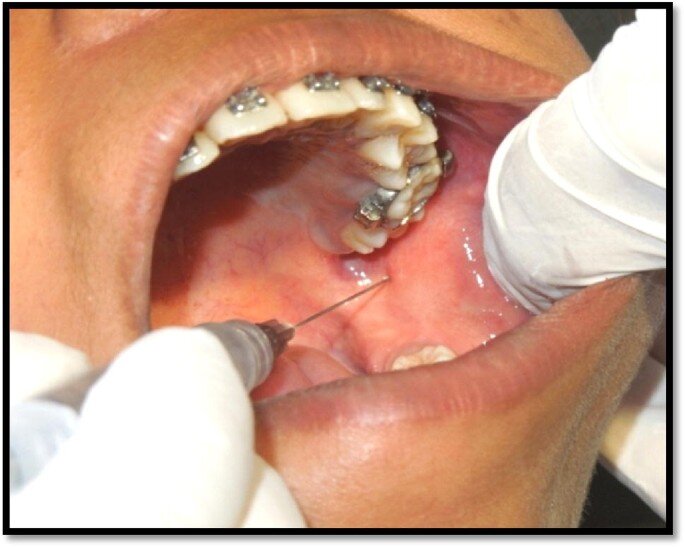Why your ID Blocks don’t always work
Have you ever given your patient an ID block but still find the patient is still a little uncomfortable? Your tutor and lectures say to look for a crappy triangle but you can’t see it so just go for a YOLO approach? You find yourself still needing to reassure the patient and they still flinch occasionally once the injection is done?
A common reason for your ID blocks not being fully effective is that you can give an injection which partially anaesthetises the patient. The inferior alveolar nerve block is a technique sensitive procedure. It requires approximating where the inferior alveolar nerve exits the mandibular foramen. In simple terms, there’s a tiny hole in the mandible. Out of this whole comes the nerve we’re trying to get numb.
.
We can’t see this hole visually, due it being covered in mucosa. So we have to use anatomical landmarks to try and guess roughly the location of this foramen. However, sometimes we aren’t very accurate and may contact bone that is not very close to this hole. When this happens, it’s normally due to hitting the bone too far anteriorly, or too far forward. You’ll know when this happens though as half of your needle will still be visible. In reality, most of your needle should be in the mucosa, with probably only 1cm showing (be careful not to bend or fracture the needle at this point).
If you do deposit local anaesthetic too far anteriorly, the liquid will still diffuse and the surrounding nerves such as the lingual nerve may become numb and some branches of the inferior nerve may become partially numb. This isn’t reliable as the mandible bone is thick which makes diffusion slower. This is where the patient might tell you they feel numb and tingly, and you may be able to start dental work. But then halfway through the procedure, the tiny amount of LA that diffused will no longer be effective.
Hence in short, the most significant reason for your ID blocks not working is that you’re not depositing the LA in the right location. But the diffusion of the liquid is making the patient a little bit numb and makes you feel you’ve done it correctly.
If you come from across the contralateral premolars and most, if not almost all the needle is in the mucosa before hitting bone, you’re almost certain to have a more effective block 😎
No bueno. If your needle looks like this then there’s less chance you’re in the correct location. However, there is variation in anatomy between patients but just keep this in mind!
Try looking out for this next time you’re giving an ID block, trust us it’s a game changer.
Why not check out below to see what other tips and tricks we have that can level up your dentistry game 👇

